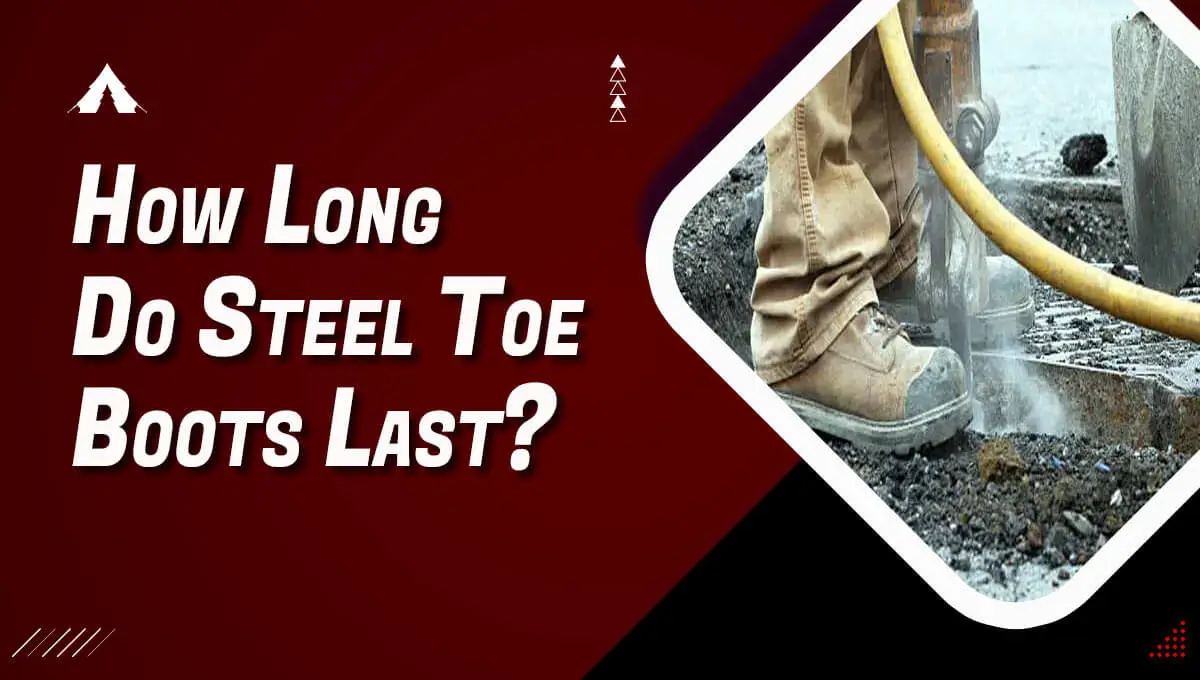Steel toe boots are a stalwart companion for those who toil in demanding environments, offering protection and support. Workers in various industries, from construction to manufacturing, rely on the robustness of these boots. In this article, we’ll delve into the longevity of steel-toe boots, unraveling the factors that influence their lifespan.
Understanding the Construction:
Steel-toe boots are crafted with durability in mind. Incorporating high-quality materials, such as leather and steel, fortifies these boots against the rigors of the workplace. The meticulous construction ensures a sturdy defense against potential hazards, making them indispensable for laborious tasks.
Material Matters:
Leather, a cornerstone in producing steel-toe boots, is renowned for its durability and resistance to wear and tear. The robust nature of leather safeguards the boots from abrasions, enhancing their lifespan. Additionally, the steel cap reinforces the toe area, shielding against impact and compression.
Daily Wear and Tear:
The lifespan of steel-toe boots is inevitably linked to the wearer’s usage patterns. Daily exposure to harsh conditions, such as heavy machinery, rough terrain, or chemical spills, accelerates the wear and tear. Regularly cleaning and maintaining the boots can significantly extend their life expectancy.
Proactive Maintenance:
In the realm of longevity, proactive maintenance emerges as a key player. Regularly inspecting the boots for signs of wear, replacing worn-out insoles, and applying suitable protective coatings can substantially prolong their lifespan. Prevention, as they say, is better than cure.
Environmental Influence:
The environment in which steel-toe boots operate is pivotal in determining their durability. Harsh climates, extreme temperatures, and exposure to chemicals can expedite the breakdown of materials. Matching the shoes with the environmental challenges they may encounter is imperative.
Quality Assurance:
Investing in high-quality steel-toe boots from reputable manufacturers is akin to laying a solid foundation. Quality assurance measures implemented during the manufacturing process contribute to the overall robustness of the shoes. It’s a case of “you get what you pay for.”
Usage Frequency:
The frequency of use directly impacts the longevity of steel-toe boots. Intense and prolonged use can lead to premature wear, especially without breaks or rotation with alternate footwear. Implementing a rotation system and giving the shoes time to breathe can mitigate this issue.
Comfort and Fit:
An often overlooked aspect, the comfort, and fit of steel-toe boots, can influence their durability. Ill-fitting boots can cause discomfort, leading to increased wear and tear as the wearer compensates for the pain in their movements. Opting for the right size and ensuring a comfortable fit is essential for prolonged use.
Signs of Wear:
Identifying early signs of wear and addressing them promptly is crucial for extending the lifespan of steel-toe boots. Cracks, frayed seams, or worn-out treads are indicators that should not be ignored. Swift action, such as repairs or replacement, can prevent further deterioration.
The Myth of Indestructibility:
While steel-toe boots are designed to withstand considerable stress, it’s essential to dispel the myth of indestructibility. No boot is impervious to the laws of wear and tear. It is unrealistic to expect footwear to last indefinitely under extreme conditions, no matter how robust.
Transitioning to a New Pair:
Knowing when to transition to a new pair of steel-toe boots is as important as understanding their longevity. Ignoring the signs of irreversible wear compromises safety and comfort. It’s a proactive measure that ensures the wearer is consistently protected on the job.
Also Read Where Are ASICS Shoes Made?
Conclusion:
In industrial footwear, the question of how long steel-toe boots last is nuanced—their durability hinges on many factors, including materials, maintenance, usage patterns, and environmental conditions. By being aware of these elements and adopting proactive measures, workers can maximize the lifespan of their steel-toe boots, ensuring ongoing protection and support in the challenging landscapes they navigate daily. Remember, a well-maintained pair of steel-toe boots is not just an investment in footwear but a commitment to safety and longevity in the workplace.
Frequently Asked Questions:
How much can steel-toe boots withstand?
Steel toe boots are built to endure substantial force and pressure. They can withstand heavy objects, like tools or equipment, falling from a reasonable height. The steel toe cap acts as a shield, protecting your feet from potential impact or compression injuries in demanding work environments.
What is the lifespan of steel-toe boots?
The lifespan of steel-toe boots depends on factors like usage, maintenance, and environmental conditions. They can last for several years with proper care, regular cleaning, and timely repairs. However, constant exposure to harsh conditions may reduce their durability.
How much can steel-toe boots withstand?
Steel-toe boots can handle a lot! They’re designed to protect your feet from heavy stuff falling on them. The steel cap in the shoes is like a superhero shield, stopping things from hurting your toes. So, they can take a beating and keep your feet safe in challenging situations.

